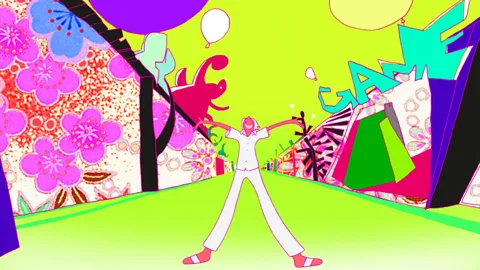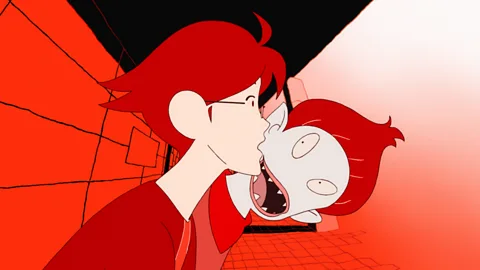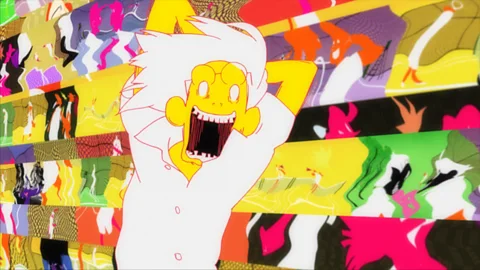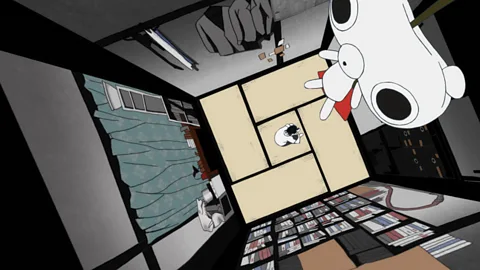The animation that showed me the meaning of life
 The Tatami Galaxy Committee
The Tatami Galaxy CommitteeIn our latest essay in which a critic reflects on a cultural work that brings them joy, Kambole Campbell writes about the anime series that has helped him overcome his fear of failure.
Sometimes the simplest message can be the most encouraging. As I have moved into the professional world, I’ve often been beset by a fear of failure – as, I imagine, have a lot of people my age. At 25, only four years on from my graduation, it’s hard to feel like I’ll ever achieve whatever nebulous idea of success I thought out for myself. This anxiety has sometimes resulted in me prizing ‘productivity’ above all else, and agonising that every moment must be spent career-making. This in turn has led me, at times, to a state of burnout, where I simply give up and do nothing.
More like this:
In these instances, the complex ‘guides to living’ out there tend to wash over me. But what has helped me deal with these emotions more than any self-help manual is one of my favourite animated series – which, despite its wild visual style and metaphysical escapades, has, at its core, a simple but powerful message: that making success a cornerstone of your happiness is, in fact, to put it forever out of your reach, while distancing yourself from the important things already immediately around you. Supremely empathetic and entertaining, that series is Japanese animator Masaaki Yuasa’s The Tatami Galaxy, a cult hit celebrating its 10th anniversary this year.
 The Tatami Galaxy Committee
The Tatami Galaxy CommitteeThe Tatami Galaxy was the beginning of a magnificent decade for Yuasa. He had earlier hits like the bizarre 2004 feature film Mind Game and the 2008 12-episode sci-fi Kaiba, but it was this show that carried him into more widespread recognition. Not long after, in 2014, he co-founded the animation studio Science Saru, with which he had a run of similarly wild films like Lu Over The Wall and this year’s Ride Your Wave, as well as the Netflix show Devilman Crybaby. The Tatami Galaxy has set the tone for a lot of this work, both visually and thematically – many being surreal and fantastical journeys of young love and teenage malaise that also offer wild spins on Japanese folklore.
A cycle of chaos
Based on the light novel of the same name by Tomihiko Morimi, the series follows new Kyoto university student Watashi in his search for a “rose-coloured campus life”. For him, this means an easy, direct route to perfect happiness, and romantic coupling with “raven-haired maidens”. The very first episode of The Tatami Galaxy sets the pattern for the series: he s a club (in the first episode, tennis) but fails at socializing. He then falls in with Ozu, a boy Watashi says looks like a yokai (a demon from Japanese folklore) – after which the two wreak havoc together. As events spiral into bizarre chaos, Watashi wishes he could start over – and at the end of every episode, that wish is granted. The clock rewinds, the credits roll, and so in the next episode Watashi gets to remake his first choice of which club to – though whatever his decision, he always ends up in disarray.
With every rewatch, I’ve found The Tatami Galaxy to be an immensely encouraging show. It is hypnotic and can be overwhelming, thanks both to the myriad visual styles all crammed into 20 short minutes and Watashi’s lightning-fast narration, which reflects how he thinks – he overanalyses, while everyone around him just follows their instincts.
For all its madness however, there’s plenty to relate to in Morimi and Yuasa’s depiction of university, with its many societies made up of people of varying absurdity. And there's solace to be found in how they show that a time that is supposed to be the crossroads of your life is really just another step. As Andrew Osmond, author of 100 Animated Feature Films, puts it, the show “makes more sense the longer you stay with it, as what seems to be random chaos resolves into enlightenment over the series.”
 The Tatami Galaxy Committee
The Tatami Galaxy CommitteeAt its core is Watashi, a funny but rather tragic figure who is a constant victim of his own unrealistic expectations (“I set out to make 100 friends!”), and imagines the meaning of this two-year period of his life will magically appear in front of him. Whatever society he s, he is always focused on what reward he can get out of it at the expense of experience itself. I find it easy to relate to Watashi’s futile drive to ‘win’ at life, and his anxiety at not doing so: post-graduation, my faith in my ability to accomplish anything fast became worn down by the worry that everything I was doing was in service of a bad decision, a waste of the privilege that was having a university education in the first place.
But while Watashi never really learns anything from each of his different choices, only repeating the same errors in a new context, this is actually quite life-affirming – as it means that, if there is no such thing as progress, then he can simply be happy as he is. As Ozu tells him: “it doesn’t matter what path you take, you’ll end up in the same place”.
Visually, too, there’s plenty of comfort and joy to be had watching The Tatami Galaxy; its experimental and often abstract animation will be exciting and unique to casual observers and anime irers alike. Aside from its vivid and ever-changing use of colour, the most distinctive quality of Yuasa's flexible style is how he constantly emphasises flatness in his animation, which contrasts with the photorealistic detail of his contemporaries like Makoto Shinkai or those at Studio Ghibli. The show directly lifts Yusake Nakamura’s illustrations from the novel, preserving their two-dimensional appearance in the transition from page to screen. This is emblematic of Watashi's realisation that he has given himself a limited perspective of the world and the people around him.
Where the mundane meets the magical
Above and beyond this central flatness though, the show’s animation is expressive in a number of ways, through a collision of different styles, colours and even different mediums that help to keep the show feeling fresh, even on a rewatch. “We wanted to incorporate ideas we knew made the novel unique and innovative […] it was tricky at first, but [the blend of styles] became a wonderfully expressive tool for us,” explains Science Saru co-founder Eunyoung Choi, a longtime collaborator with Yuasa (who recently worked with him on the delightful Keep Your Hands Off Eizouken!) as well as director of the series’ 10th episode.
 The Tatami Galaxy Committee
The Tatami Galaxy CommitteeThis tapestry effect can be felt in every cut of The Tatami Galaxy, as different locations, people, and clubs are signified by these differing visual elements. Its rickety student halls, for example, are depicted through a mixture and contrast of expressionist drawings and real photographs, taken in a traditional Japanese room filled with tatami mats. Outside of Watashi's dorms, meanwhile, the series’ vision of Kyoto is a very nostalgic one, which contributes to the idea that the world that Watashi finds himself in isn’t as bad as it seems.
The world of The Tatami Galaxy is at once mundane and magical. Anything could appear different from one second to the next. Characters and environments can change shape and colour constantly to suit whatever mood or genre the writers decide to toy with: nothing is limited by appearance or physics, even if Watashi’s decision-making is. That flexibility is perhaps the most definitive quality of Yuasa’s work, and part of why it easily stands the test of time.
It’s also another reason I find the show so soothing – watching its constantly shape-shifting universe is a reminder that it’s important to take stock of your surroundings in the moment, rather than only focusing on what lies ahead. To quote a character in Tokyo Story, a film by Watashi’s friend Ozu’s namesake, “happiness is not something you expect, but something you create”: that’s a message that Yuasa deconstructs and explores through The Tatami Galaxy’s many parallel universes.
Each version of Watashi lives a “gloriously wasted” campus life, never moving forward. But, as we see, there is pleasure in that – in him having that freedom of choice to do whatever feels right at the time, with whatever company he chooses to keep. So often the drive towards success, and to plan for some ideal future, can become debilitating. At the very least, The Tatami Galaxy reminds me that I’m grateful for the chances I’ve had, and the friends I’ve made while figuring things out. It is a show that in the end sees the human connection found through your ions, adversarial or otherwise, as the real value of living – and at a time when our social connections have been disrupted, that message could not be more poignant.
The Tatami Galaxy and Keep Your Hands Off Eizouken! are both available to stream on Crunchyroll
Love film and TV? BBC Culture Film and TV Club on Facebook, a community for cinephiles all over the world.
If you would like to comment on this story or anything else you have seen on BBC Culture, head over to our Facebook page or message us on Twitter.
And if you liked this story, sign up for the weekly bbc.com features newsletter, called The Essential List. A handpicked selection of stories from BBC Future, Culture, Worklife and Travel, delivered to your inbox every Friday
